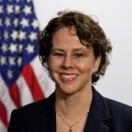
As President Obama emphasized in his final State of the Union address, America has made real progress over the past seven years, but we must do even more if we are going to meet the fundamental challenges of the 21st century.
One of these urgent challenges is reforming our broken immigration system, which only Congress can fully address. Our Nation prospers when we welcome immigrants, as exemplified by many of the First Lady’s extraordinary State of the Union guests: Satya Nadella, who left his home in India to earn advanced degrees at U.S. universities, and is now CEO of Microsoft; Refaai Hamo, a Syrian scientist who survived terrible wartime tragedies and is building a new life with his family here in America; and Oscar Vazquez, a U.S. Army veteran and DREAMer who came to this country as a child and led a team of under-resourced Hispanic high school students who took on an MIT team in an underwater robotics competition -- and won.
That’s why the President continues to call on Congress to pass comprehensive bipartisan immigration reform. Until then, the Administration will continue to pursue reforms within its authority to fix as much as it can. That includes, for example, taking steps to modernize and streamline our legal immigration system, partnering with local governments and community leaders to welcome new Americans, promoting the rights and responsibilities of citizenship, and ensuring that our limited enforcement resources are used effectively by implementing clear and effective enforcement priorities.
Fixing our broken immigration system is an economic imperative. The executive actions announced by the President in November 2014, if fully implemented, could boost the nation’s economic output by up to $250 billion, while shrinking the Federal deficit by $65 billion over the next ten years.
Many of these economic benefits spring from the President’s actions to attract and retain the most talented workers, graduates, and entrepreneurs from around the world. As the President said at a recent naturalization ceremony for new Americans from over 25 countries:
“Immigrants like you are more likely to start your own business. Many of the Fortune 500 companies in this country were founded by immigrants or their children. Many of the tech startups in Silicon Valley have at least one immigrant founder.”

As 2016 gets underway, here are the reforms the Administration is making to promote the kind of high-skilled immigration that has helped fuel America’s economic engine.
Actions Taken in 2015
-
Empowering the spouses of high-skilled immigrants to put their own education and talents to work: Spouses of certain high-skilled workers—those on H-1B visas who are also on the path to obtaining lawful permanent residence status (commonly known as a “green card”)—can pursue employment themselves. These women and men are “Americans-in-waiting,” whose families are often stuck for years in lengthy green card backlogs as a result of our broken immigration system. Allowing them to put their skills to use is reducing the strain on their families during that waiting time and will yield significant benefits for our economy as well. (This “H-4 rule” went into effect in May 2015; read more.) Thus far, more than 35,000 spouses have received work authorization.
-
Attracting the world’s top professional talent: The Administration has improved clarity and consistency for a visa category that allows global companies to temporarily transfer specialized knowledge workers to the United States for the purpose of launching or assisting a U.S. operation. These reforms are designed to give greater certainty for hundreds of thousands of high-skill workers and their employers, benefiting our entire economy and spurring additional investment. (This “L-1 guidance” went into effect in August 2015; read more.)
-
Retaining the immigrant scientists and engineers we educate here: Our universities train some of the world’s most talented students in science, technology engineering, and mathematics (STEM), but our broken immigration system compels many of them to take their skills back to their home countries. We should be welcoming the best and brightest rather than sending them home to compete against us. The Administration is strengthening and extending on-the-job training for STEM graduates from U.S. universities, giving them a reasonable period of time to fully realize their course of study. (The proposed version of this “OPT STEM rule” was published in October 2015, and the comment period has closed; read more.)
-
Unlocking the talents of high-skilled Americans-in-waiting: Most high-skilled immigrants get started on a temporary work visa (typically the H-1B visa), and if there are no American workers qualified and available to do the job, the employer can sponsor that worker for a green card. But the wait for that green card can last years, even decades, even after the petition is approved. During this time the worker may be effectively locked into one position at the sponsoring company. The Administration is making it possible for these high-skilled workers to accept promotions, change positions or employers, or start new companies while they and their families wait to receive their green cards, and ultimately become Americans. (The proposed version of this rule is open for public comment until February 29, 2016. Related guidance was published in November 2015.)
- Bringing our immigration system into the digital age: The President charged key Federal agencies with bringing the immigration system into the 21st century to grow our economy, help businesses and workers, and protect families. The resulting report, Modernizing and Streamlining Our Legal Immigration System for the 21st Century, includes a wide range of new actions that federal agencies will undertake to improve the visa experience for families, workers, employers, and people in need of humanitarian relief. This includes efforts by the U.S. Digital Service to shift the current paper-based visa application process into a more efficient, sustainable, and user-centered digital system. (This report was published in July 2015; read more.)
Actions in 2016
-
Creating a clear pathway for promising entrepreneurs: The Administration is committed to enabling more of the world’s best and brightest entrepreneurs to set up shop, innovate, and create jobs here in America. Under existing authority granted by Congress, DHS may allow an individual to work in the United States when doing so would yield a “significant public benefit.” The Department of Homeland Security has announced it will develop a process for considering, on a case-by-case basis, whether to grant this temporary “parole” to certain startup founders who have been awarded substantial U.S. investor financing or otherwise hold the promise of innovation and job creation through the development of new technologies or the pursuit of cutting-edge research. Read more.
-
Clarifying immigration options for students educated and employed here: The Department of Homeland Security is determining the appropriate mechanisms to clarify which nonimmigrants are permitted under the law to maintain nonimmigrant status, while taking steps toward obtaining lawful permanent residency. In particular, the Administration will also seek to clarify the circumstances under which U.S. employers may directly sponsor individuals on F-1 student visas for green cards. Read more.
-
Modernizing and improving protections for American workers: The Administration will modernize the requirements of employers that sponsor workers for green cards, in order to ensure that this program is both streamlined for users and protects American workers. Read more.
- Attracting outstanding professors and researchers: Employers can now present a broader range of evidence to demonstrate that an outstanding professor or researcher is among the very best in their field, consistent with the standard for other green card categories. (This final rule was published in January 2016; read more.)
Learn more:
- President Obama’s Final State of the Union Address
- The President’s Immigration Executive Actions
- The Economic Benefits of Fixing Our Broken Immigration System
- Taking Action to Attract High-Skilled Immigrants, Graduates, and Entrepreneurs



